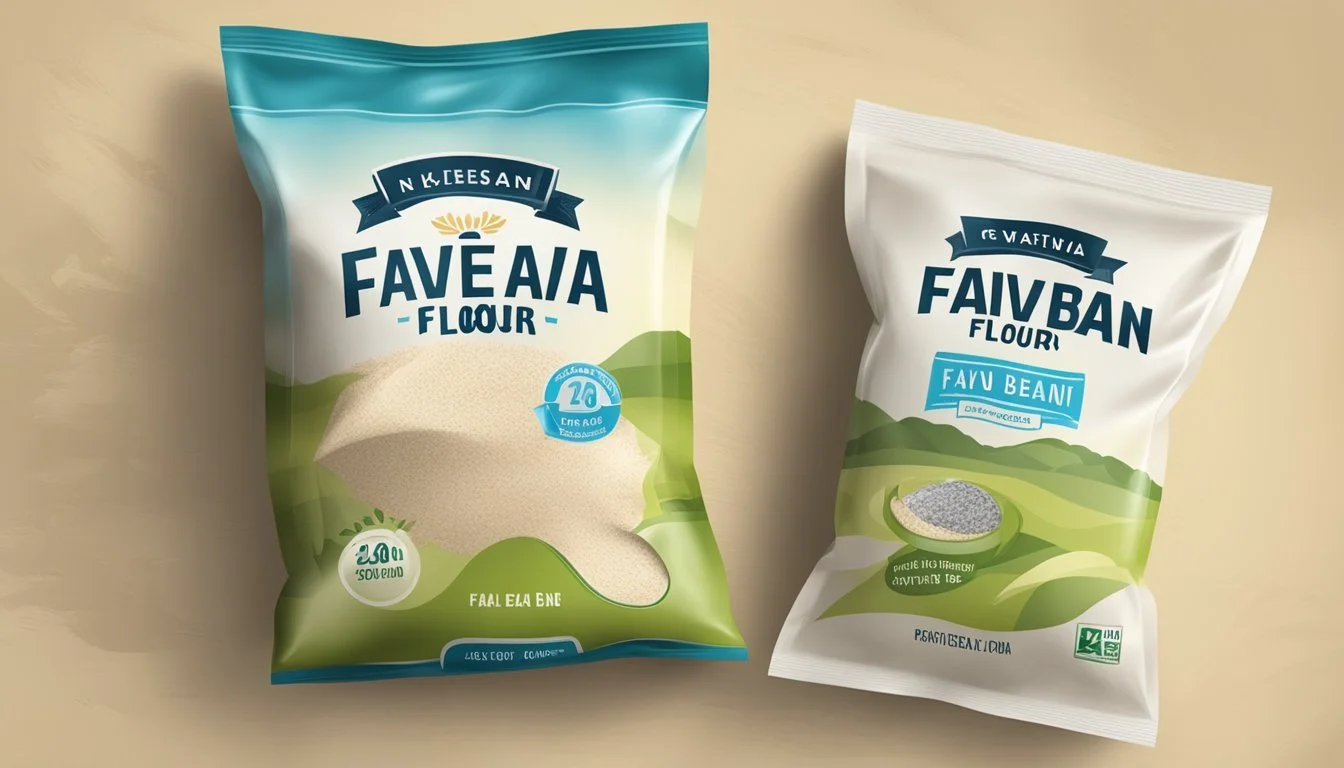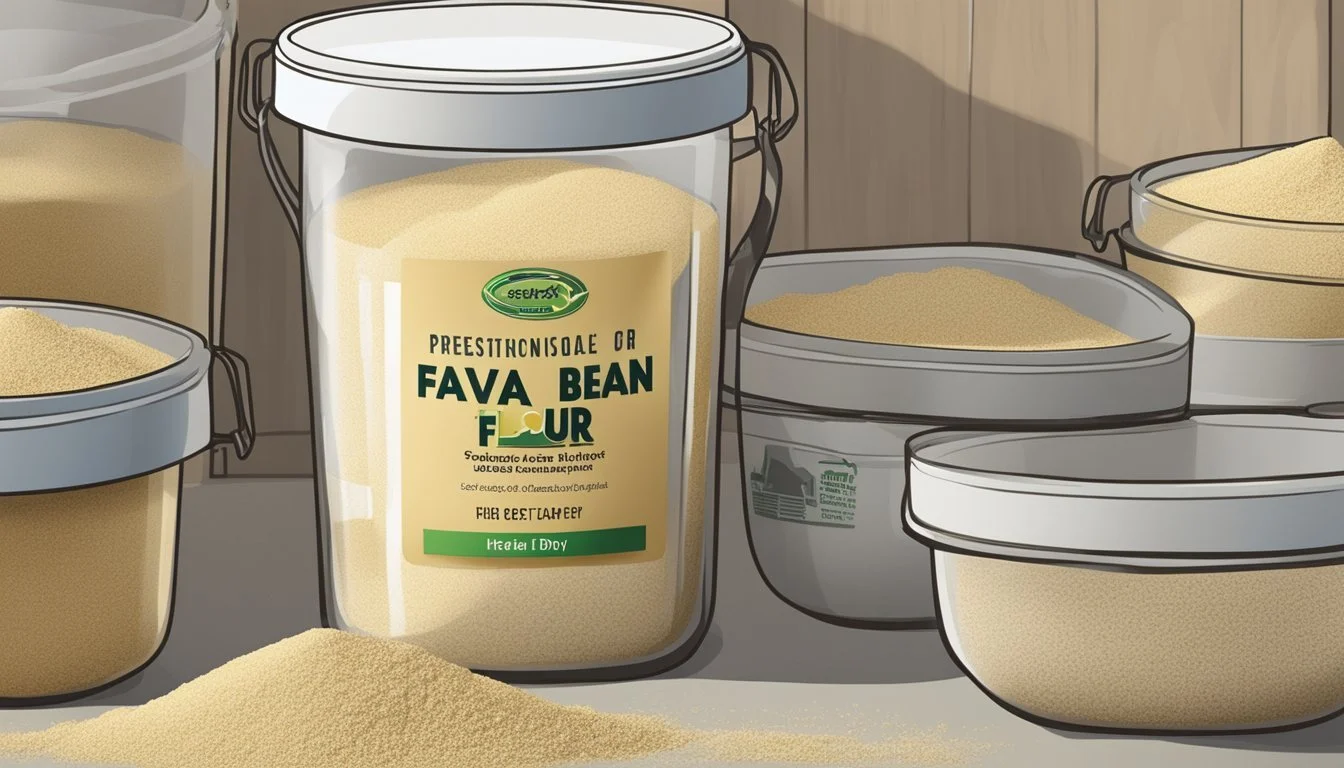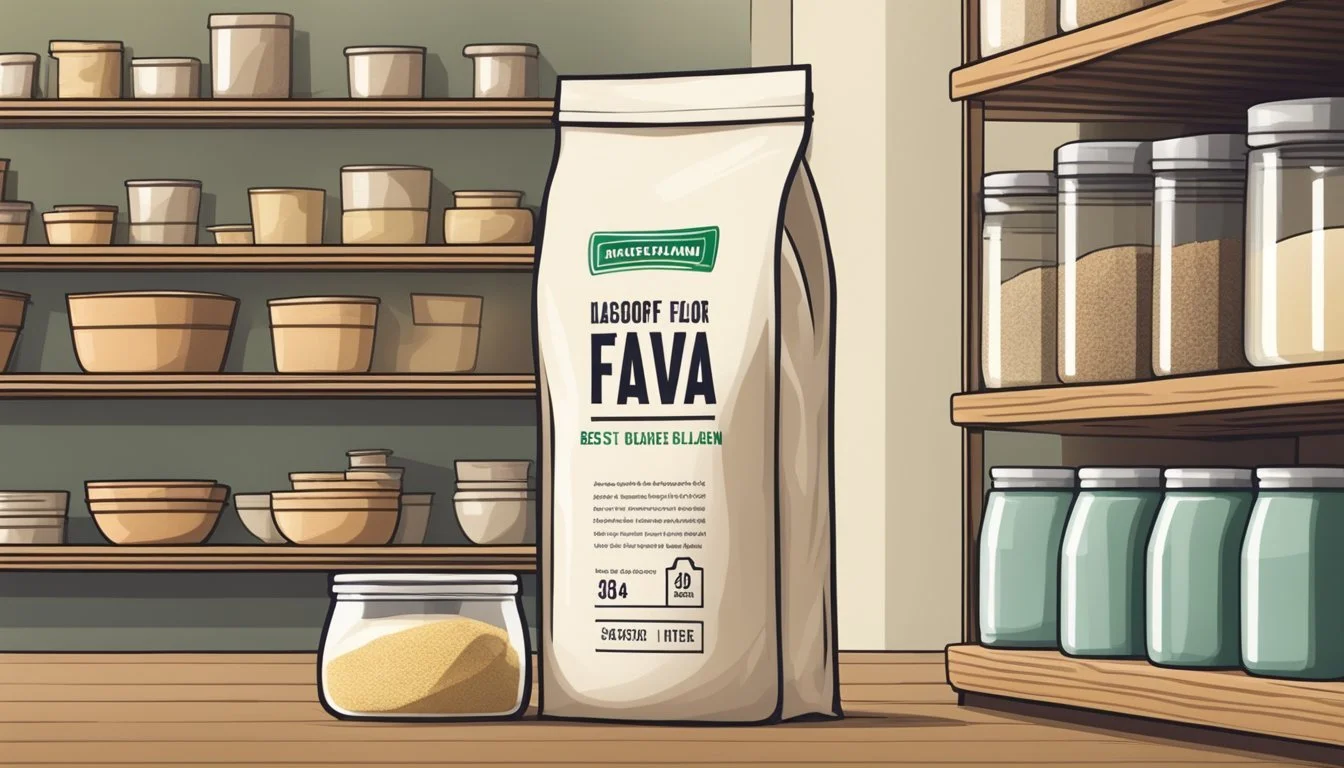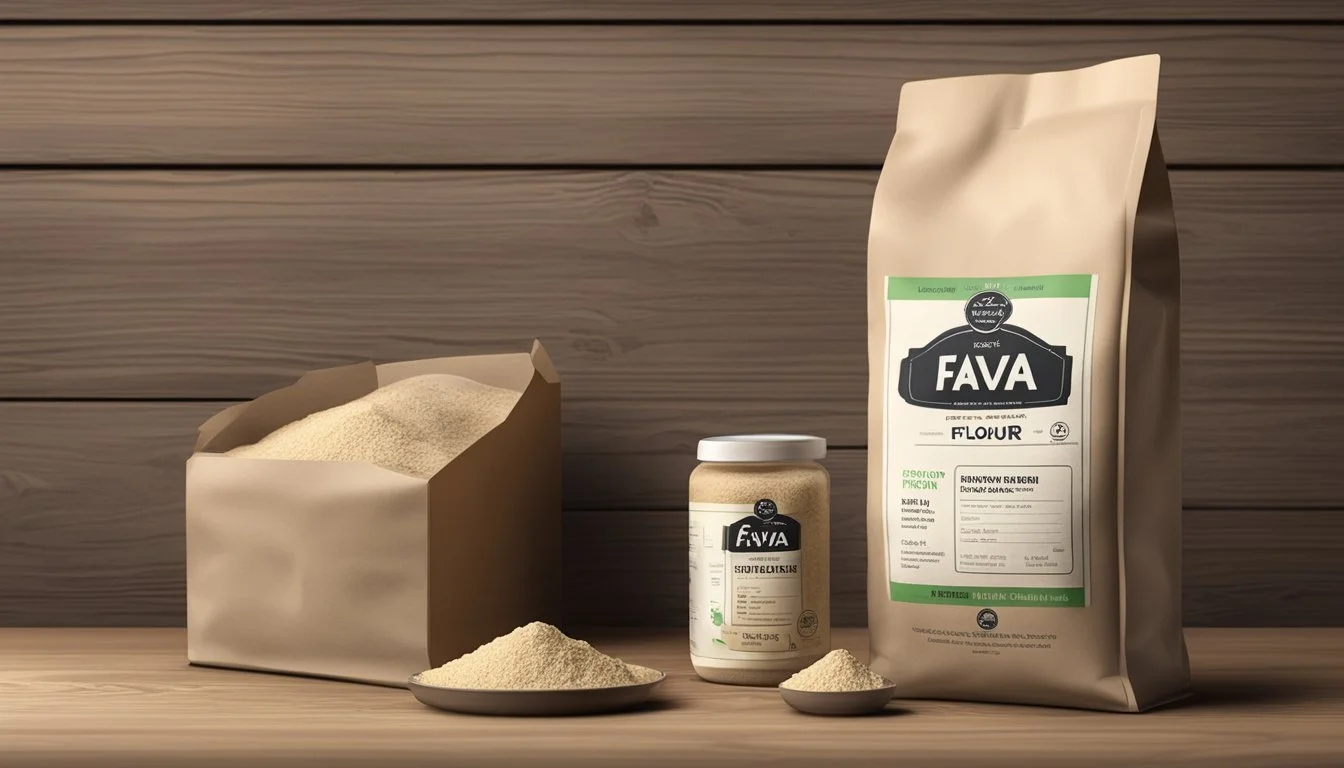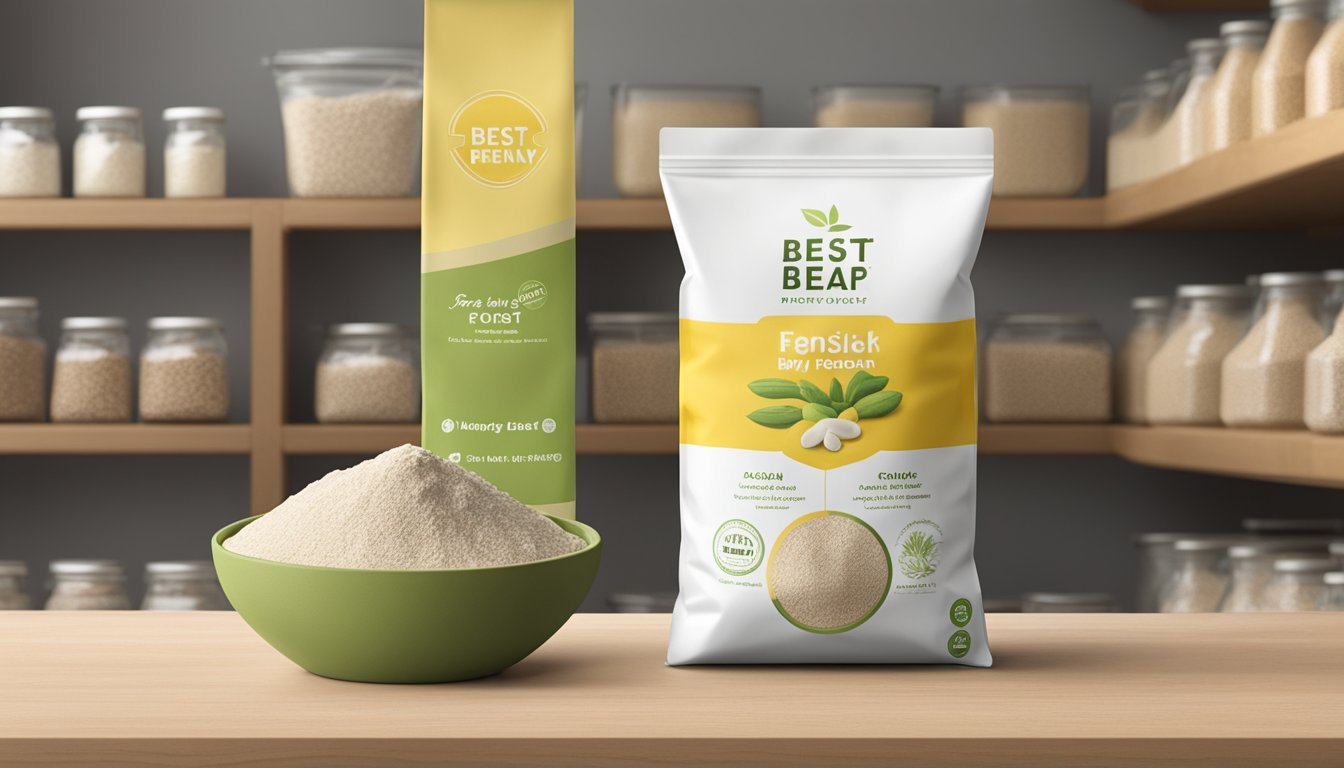Does Fava Bean Flour Go Bad?
Storage Tips and Shelf Life
Fava bean flour, a gluten-free alternative gaining popularity, does go bad quicker than traditional flours due to its higher fat content. Properly stored, fava bean flour can last up to six months, but it's best consumed before this period to ensure optimal quality. Changes in color or an off-putting taste are clear signs that your fava bean flour might be past its prime.
Storing fava bean flour in a cool, dry place within an airtight container can help extend its shelf life. For the best results, some recommend keeping it in the refrigerator. This will not only preserve its freshness but also prevent it from absorbing unwanted odors and moisture.
Given its short shelf life, anyone interested in using fava bean flour should remain vigilant about its storage conditions. This simple attention to detail can make a substantial difference in the quality of your baked goods and culinary creations.
Understanding Fava Bean Flour
Fava bean flour is a versatile and nutritious gluten-free ingredient derived from fava beans. It carries a high protein content and an array of culinary applications, offering sustainable, locally-sourced benefits.
Origin and Sources
Fava beans are legumes that have been cultivated for thousands of years. They are believed to have originated in the Mediterranean region and have since spread worldwide. These beans are typically grown in temperate climates and are known for their resilience and minimal water requirements, making them an eco-friendly crop.
Farmers harvest the beans when they are mature and dry. The beans are then milled into a fine powder to produce fava bean flour. This process ensures that the nutritional integrity of the beans is preserved.
Nutritional Profile
Fava bean flour is a powerhouse of nutrition. It boasts over 25% protein content, making it an excellent source of plant-based protein. This is particularly beneficial for vegetarians and vegans. The flour is also rich in dietary fiber, supporting digestive health.
In addition to protein and fiber, fava bean flour is low in fat and packed with essential vitamins and minerals. Key nutrients include iron, magnesium, and folate. The flour is naturally gluten-free, making it a safe option for individuals with celiac disease or gluten intolerance.
Culinary Uses
Fava bean flour's versatility shines in the kitchen. It can be used to create a wide range of gluten-free baked goods, such as bread, crackers, and pastries. The flour imparts a dense texture and nutty flavor to these recipes. Additionally, it can be employed as a batter for frying or a coating for meat and fish.
Another common use for fava bean flour is in pasta making. It adds nutritional value and a unique taste to homemade noodles. The flour can also be toasted to enhance its flavor profile before incorporating it into recipes.
Fava bean flour stands out as an ingredient not just for its nutritional benefits but for its diverse culinary applications, making it a valuable addition to any pantry.
Storage Guidelines
Proper storage is crucial to maintaining the quality and shelf life of fava bean flour. By following these guidelines, you can ensure the flour remains fresh and usable for longer periods.
Optimal Storage Conditions
To store fava bean flour effectively, it should be kept in a cool, dry place. Airtight containers are ideal to prevent exposure to moisture and air, which can lead to spoilage.
The optimal temperature for storing fava bean flour is about 50-70°F. Extreme temperatures can affect its quality.
Avoid humid environments as the flour can absorb moisture, leading to mold growth. If storing for long periods, refrigeration or freezing can extend its shelf life. Labeling the containers with the purchase date can help keep track of its age.
Shelf Life
When stored under optimal conditions, fava bean flour can last for 6 to 12 months.
Exposure to air, light, and humidity can significantly reduce its shelf life. Check for signs of spoilage such as discoloration, off-putting smell, or unusual taste, as these indicate that the flour is no longer good to use.
In a refrigerator, fava bean flour may last closer to 1 year, whereas freezing can extend its shelf life beyond 12 months. Always ensure the flour is completely dry before storing to prevent clumping and spoilage. Regularly check and rotate your stock to use the oldest flour first.
Factors Affecting Deterioration
The longevity of fava bean flour largely depends on its storage conditions and inherent qualities. Key aspects like environmental factors and physical signs can indicate its spoilage.
Environmental Influences
Temperature and Humidity: High temperatures and humidity levels dramatically shorten fava bean flour's shelf life, promoting the growth of mold and bacteria. Flour stored in cool, dry places generally lasts longer.
Light Exposure: Direct sunlight can cause discoloration and faster spoilage. Keeping the flour in an opaque container protects it from light damage.
Air Exposure: Exposure to air introduces moisture and contaminants. Sealed, airtight containers are ideal for extending freshness.
Signs of Spoilage
Discoloration: Fava bean flour should be light pale yellow or cream. Dark spots or any unusual color changes can indicate spoilage.
Texture Changes: Flour traditionally has a fine consistency. Lumps or altered textures suggest the presence of moisture and potential spoilage.
Odor: A sour or off-smell is a clear indicator. Fresh fava bean flour has a neutral scent; any deviation hints at deterioration.
Taste: Though not typically consumed raw, an off-putting taste confirms that the flour has gone bad.
By paying attention to these factors and signs, users can better manage and store their fava bean flour to maintain its quality and usability.
Preventing Spoilage and Extending Freshness
Proper storage techniques are crucial to maintaining the quality and extending the life of fava bean flour. Utilizing air-tight containers, managing moisture levels, and storing in a cool environment are essential practices to ensure freshness.
Best Practices
Store fava bean flour in air-tight containers to prevent exposure to air and moisture, which can accelerate spoilage. Glass or plastic containers with tight-sealing lids work well. Avoid keeping the flour in its original packaging once opened, as it may not be as effective in preventing moisture entry.
Keep the storage environment cool and dry. Ideally, store the flour in a pantry or cupboard away from direct sunlight and heat sources. High temperatures can speed up the spoilage process. If you live in a humid area, consider placing the flour in the refrigerator or freezer.
Additionally, always use clean utensils when scooping out flour to avoid introducing contaminants. Label containers with the date of storage to keep track of how long the flour has been stored. Regularly check the flour for signs of spoilage such as discoloration, off-putting smells, or texture changes.
Health Implications
Fava bean flour offers numerous dietary benefits, but it’s crucial to note potential allergen and sensitivity issues as well.
Dietary Benefits
Fava bean flour is a nutritional powerhouse. It boasts over 25% protein content, making it an excellent source of plant-based protein. This is particularly beneficial for vegetarians and vegans. Rich in dietary fiber, the flour helps aid digestion, promoting a healthy digestive system and potentially reducing cholesterol levels. The inclusion of fava bean flour in a diet can also contribute to weight management due to its high fiber content and relatively low caloric value.
Moreover, it’s a gluten-free alternative, making it suitable for individuals with celiac disease or gluten intolerance. The flour is also packed with essential vitamins and minerals, such as Vitamin A, Vitamin B6, and Vitamin C, which support various bodily functions, including immune health and metabolism.
Allergens and Sensitivities
Despite its benefits, fava bean flour can pose risks for some people. It’s essential to be aware that fava beans can trigger allergic reactions in susceptible individuals. G6PD deficiency is a genetic disorder that can cause severe reactions, including the destruction of red blood cells, when fava beans are consumed.
The flour may also contain other common allergens, and those sensitive to legumes should proceed with caution. Symptoms can range from mild digestive discomfort to severe allergic reactions. Individuals with known sensitivities or food allergies should consult healthcare professionals before adding fava bean flour to their diet.
Understanding these potential issues can help make informed dietary choices, balancing the health benefits with any risks.
Culinary Applications
Fava bean flour is a versatile ingredient that can enhance a variety of dishes, from baked goods to savory main courses. Its high protein content and unique flavor profile make it a valuable addition to gluten-free and traditional recipes alike.
Baking and Cooking
Fava bean flour shines in baking, adding a nutty flavor and dense texture to bread, cakes, muffins, and cookies. It's often used to create gluten-free products. Bakers can replace a portion of wheat flour with fava bean flour to boost protein content without compromising texture.
In cooking, fava bean flour is versatile. Use it in falafel mixes, as a batter for frying vegetables or meat, or to thicken soups and stews. Its binding properties are particularly useful in recipes needing a gluten-free alternative.
Creative Alternatives
Beyond traditional baking, fava bean flour offers innovative culinary possibilities. It serves as an excellent base for making pasta and pancakes, adding extra nutrition to these dishes.
For savory snacks, it can be used to make crackers and chips, providing a satisfying crunch. Fava bean flour also works well for pizza dough, delivering a unique texture and flavor. From adding body to soups to creating crispy coatings for fried foods, fava bean flour's applications are expansive.
Comparing Fava Bean Flour to Other Flours
Fava bean flour stands out for its higher protein content and unique culinary properties compared to traditional and other gluten-free flours. This comparison will help highlight the nutritional and functional differences that distinguish fava bean flour from its counterparts.
Nutritional Comparison
Fava bean flour is notable for being higher in protein and fiber than many regular flours. With over 25% protein content, it's an excellent plant-based protein source. In contrast, all-purpose flour generally contains around 10% protein.
Fiber content is another area where fava bean flour excels. It contains significant fiber compared to white or all-purpose flour, which has less fiber.
Fava bean flour also has a lower glycemic index, making it a better choice for those monitoring blood sugar levels.
Chickpea flour is another high-protein and high-fiber option, but it typically has a slightly lower protein content than fava bean flour. Similarly, bean flours such as garbanzo or black bean flour also provide beneficial nutrients but vary in protein and fiber content.
Functional Differences
Fava bean flour offers a nutty flavor and a dense texture, making it versatile in many gluten-free recipes. Due to its higher fat content, fava bean flour has a shorter shelf life and should be consumed sooner than wheat-based flours.
In baking, fava bean flour can be used to create gluten-free bread, pastries, and crackers. Its ability to retain moisture and add density makes it suitable for bread and baked goods.
All-purpose and white flours are more adaptable for a broad range of recipes but lack the high protein and fiber content of fava bean flour.
Fava bean flour can also serve as a batter for frying or as a coating for meat and fish, unlike typical wheat flour. This adaptability further highlights the functional versatility of fava bean flour, making it a valuable addition to gluten-free and nutritious cooking.
Unique Characteristics of Fava Bean Flour
Fava bean flour offers a mild, nutty flavor that adds a unique touch to various dishes. This mild flavor ensures it does not overpower other ingredients, making it versatile for both sweet and savory recipes.
The texture of fava bean flour is notably smooth and fine, which helps in creating baked goods with a dense, yet elastic structure. This elasticity is essential for replicating the texture of gluten-containing flours in gluten-free baking.
Fava bean flour acts as an excellent thickener. When added to soups, sauces, or gravies, it provides a smooth and consistent thickness.
Versatility is a hallmark of fava bean flour. It can be used in:
Breads
Pastries
Pasta
Crackers
Due to its nutty flavor, it can also be a great batter for frying or as a coating for meats and fish. This nutty profile, combined with the smooth texture, enhances the culinary experience.
Additionally, fava bean flour contains over 25% protein content. This high protein level makes it a great choice for vegetarians and vegans seeking plant-based protein sources. The protein content also helps improve the elasticity of gluten-free baked goods.
One consideration is its occasionally bitter undertone, which might require balancing with sweeter ingredients or spices depending on the dish. Despite this, the mild flavor generally blends well, adding richness without overwhelming the main flavors.
Sustainability and Ethical Considerations
Fava beans are a highly sustainable crop. They require less water than many other protein sources and improve soil fertility through nitrogen fixation. This makes them a greener choice in agriculture.
Benefits for Vegetarians and Vegans
Fava bean flour is an excellent protein source for vegetarians and vegans. It provides essential nutrients like protein, fiber, and minerals, making it a valuable addition to plant-based diets.
Reduced Environmental Impact
Using fava beans can reduce the environmental footprint of food production. Fava beans have lower greenhouse gas emissions compared to animal-based proteins. This contributes to a more sustainable food system.
Support for Ethical Farming Practices
Ethical farming practices often accompany fava bean cultivation. Farmers can engage in fair-trade practices and focus on environmentally friendly methods, supporting community livelihoods and environmental health.
Minimal Waste Through Whole-Bean Use
Producing fava bean flour involves utilizing most parts of the bean, minimizing waste. Both wet and dry fractionation methods efficiently use the bean's components, enhancing the sustainability of food production.
Table: Environmental Benefits
Benefit Description Water Efficiency Requires less water than other protein crops Soil Fertility Enhances soil via nitrogen fixation Lower Emissions Produces fewer greenhouse gases compared to animal products
Conclusion
Fava beans represent a sustainable, ethical choice for various dietary needs. They support environmental and social well-being, ensuring a thoughtful approach to food production.


